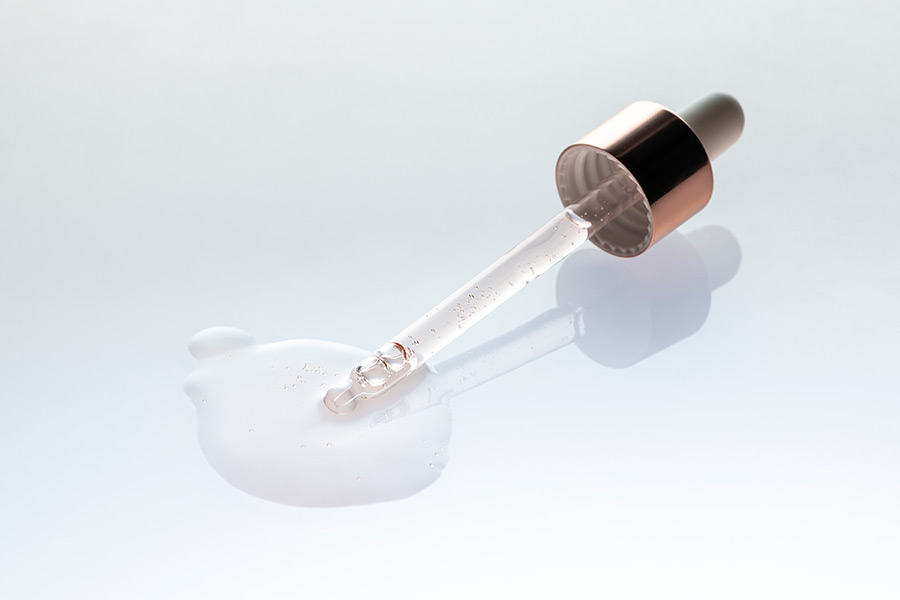When it comes to skin care products, we have more options than ever to choose from: creams, serums, exfoliants, cleansers, toners, and even sunscreens convolute our routine, making the question of how, when, and why we use something a little more complicated.
One of the most common educational conversations we have with our patients is ‘what to use when’ and ‘how much to apply’. Considering all the choices available to us, we can see why the sequence of skin care products can become confusing. To get the best out of your skin care regime, the correct order must be determined to achieve optimal results and healthy, glowing skin.
Our skin has a natural protective lining known as the skin barrier. Its function is to keep harmful bacteria from entering through the skin, but this means it will also make it difficult for skin care ingredients to penetrate the skin. This is why ingredients with smaller molecules are more effective if applied first, whereas other ingredients (such as alphahydroxy acids) that gently exfoliate or prepare the skin for deeper penetration, would follow in our skin care routine.
When we understand this simple chemistry, we can easily create a smart routine that maximises the benefits of our products and yields the most considerable results. This skin regime guide explains the order of application for each product so that you can become the master of your own skin.
Dr Alek’s Step By Step Guide
When building the perfect skin care regime it is essential to follow the guideline I have created below. As a general rule of thumb, solution-based serums or antioxidants are always applied first after cleansing the skin. A great way to remember this is applying from thin to heavy, finishing with denser creams and moisturisers.
Your Morning Regime:
We should view our morning regime as our protective layer against environmental damage such as UV exposure, pollution, and light emitted from laptops, monitors and cell phone screens. Beginning with a fresh slate, we work with products that will build and defend the skin for a great glow all day.
Step 1: Cleanser
I recommend using lukewarm water and a cleanser that is specific for your skin type. Before moving on to Step 2, it is important to completely dry your face to remove any moisture. The main reason for this is to prevent diluting the concentration of the all-important antioxidants to ensure maximum skin protection through the day.
Step 2: Toner
Toners fell out of popularity for a while as most thought this was not a necessary step, with the misconception that they stress the skin with harsh ingredients. Today’s toners have been developed to specifically allow better cleaning and removal of makeup and to help prepare the skin for the rest of the regime. It is crucial to use a toner that is formulated with your skin type and skin concern in mind.
Step 3: Antioxidant Serum
Serums contain high concentrations of vitamins and ingredients that help to correct and protect the skin during the day. My morning hero antioxidant ingredient is vitamin C, or more specifically, ascorbyl tetraisopalmitate. Another version of vitamin C is ascorbic acid which you might see used frequently by skin care brands.
The main difference between these two is that ascorbic acid requires acidity in order to be thoroughly absorbed, leading to unwanted skin reactions (irritability, redness and itchiness) whereas ascorbyl tetraisopalmitate is lipid soluble, allowing it to penetrate deeper while keeping a neutral pH, minimising unwanted skin reactions.
Step 4: Eye Cream
Always apply your eye cream after your serum has been fully absorbed (Step 3). Tiny amounts of product are required for this delicate layer of skin. Use your ring finger to dab gently under and around the eye, as it’s the weakest finger, ensuring lightest pressure.
Step 5: Targeted Treatments
If you suffer from acne or a skin condition such as Rosacea this is a good time to apply a specific targeted treatment product. Spot treatments can be applied at this time.
Step 6: Moisturiser
Some may feel that a moisturiser is not necessary, especially if you already have oily skin. However, even oily skin requires this step for hydrating and nourishing the skin. Look for non-comedogenic moisturisers that won’t clog pores, like lighter lotions or hydrating serums. Don’t skip the hydration: simply choose a moisturiser that is specific for your skin type.
Step 7: Sunscreen
This is your last step for a complete and effective morning skincare regime. Sunscreen is imperative to protect skin from UV and visible light damage, preventing age spots and hyperpigmentation. Insider tip: apply sunscreen to your eyelids, lips, ears, neck and chest. Many spots get missed but we want to take extra care to remember to protect sensitive areas. My recommendation is to use a SPF 30 (or higher), preferably containing zinc oxide and/or titanium dioxide.
Your Evening Regime:
We should approach our night time regime as a focused time for the healing and repair of skin. To maximise these benefits, follow the step-by-step guide below.
Step 1: Cleanser
If you wear makeup, first start with a specific makeup remover. Many cleansers (especially gentle milks and oils) aren’t designed to remove heavy duty beauty products, so keeping a makeup remover on hand is the best practice. Go in with your cleanser next. I like to use an exfoliating cleanser that contains alphahydroxy acids (such as glycolic acid) or a betahydroxy acid (such as salicylic acid) in the morning and an antioxidant cleanser at night (such as something vitamin C based).
Step 2: Toner
Very similar to the morning regime this step is aimed at ensuring that the skin is completely clean of the skin’s exposure to pollution, grime, and/or oil build up. Restoring the skin’s pH is also a crucial element to balancing the skin after stripping away oils.
Step 3: Eye Cream
If you experience wrinkles, fine lines, dark circles or ‘puffy eyes,’ this is a great time to use an eye cream that is targeted for your specific concern. Gently apply with your ring finger and don’t forget your eyelids.
Step 4: Serums
My nighttime hero ingredient in a serum is vitamin A. However, there are numerous night time serums that are aimed at repairing the skin, including growth factors, peptides, antioxidants (such as vitamin E, resveratrol, etc.), and skin barrier repair such as hyaluronic acid and ceramides.
Step 5: Moisturiser
If your skin is dry, then this is the best time to consider heavy, more emollient moisturisers. If your skin is oily, consider using a hyaluronic acid serum that will not aggravate or increase the sebum production. Irrespective of what you apply on this final layer, we should always keep in mind that during the night our skin repairs itself, so we it’s crucial to add ingredients that help this process.
My Final Tip:
Remember to listen to your skin as it will tell you what you need and what you should avoid.
If your skin feels sensitive after applying a serum that contains active ingredients (such as vitamin A) then skip a few nights until the sensitivity resolves itself. Reintroduce it into your skin care regime slowly by applying every 3rd night for two weeks, then every 2nd night for two weeks, and so on, until your skin becomes acclimatised to nightly applications.
I hope the above has helped empower you to build the perfect skin care regimen. Download our cheat sheet for quick reference.
Kind regards
Dr Alek Nikolic





